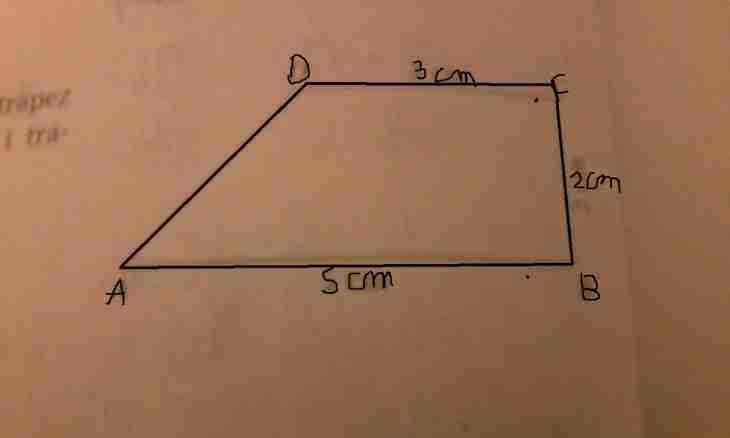Application of geometry in practice, especially in construction is obvious. A trapeze one of the most often found geometrical figures, which accuracy of calculation of elements - guarantee of beauty of an object under construction.
It is required to you
- calculator
Instruction
1. The trapeze represents a quadrangle which two parties are parallel - the bases, and two others are not parallel – sides. The trapeze which sides are equal is called isosceles or equilateral. If in an isosceles trapeze of diagonal are perpendicular, then height is equal to the half-sum of the bases, we will consider a case when diagonals are not perpendicular.
2. Let's consider an isosceles trapeze of ABCD and we will describe its properties, but only those from them which knowledge will help us to solve an objective. From definition of an isosceles trapeze AD basis = a parallel to BC = b, and AB side = = c it follows from this that corners at the bases are equal to CD, that is BAQ corner = CDS = α, in the same way a corner of ABC = BCD = β. Having generalized the aforesaid, it is fair to claim that the triangle of ABQ is equal to SCD triangle, so, AQ piece = SD = (AD are BC)/2 = (a – b)/2.
3. If in a statement of the problem we were given lengths of the bases of an and b and also side length with, then h trapeze height equal to a piece of BQ is as follows. Let's consider ABQ triangle as by definition height of a trapeze is a perpendicular to the basis, it is possible to claim that ABQ triangle rectangular. The party of AQ of a triangle of ABQ, proceeding from properties of an isosceles trapeze, is on AQ formula = (a – b)/2. Now knowing two parties of AQ and c, on Pythagorean theorem we find h height. Pythagorean theorem says that the square of a hypotenuse is equal to the sum of squares of legs. Let's write down this theorem in relation to our task: c^2=AQ^2 + h^2. From this it follows that h = √ (c^2-AQ^2).
4. For an example we will consider a trapeze of ABCD in which AD bases = a = 10 cm of BC = b = 4 cm, AB side = c = 12 cm. To find h trapeze height. We find the party of AQ of a triangle of ABQ. AQ = (a – b)/2 = (10-4)/2=3sm. Further we substitute values of the parties of a triangle in Pythagorean theorem. h = √ (c^2-AQ^2) = √ (12^2-3^2) = √ 135=11.6sm.

